Mosquito FAQs in Fairfax, VA; How Do You Stop Mosquitoes from Biting? How Much Water Do They Need to Breed & More
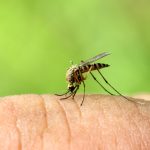 Mosquitoes are definitely a problem in Virginia. Locals are often asking experts questions regarding these hazardous insects. To help clear up some confusion, we at CSI Home & Commercial Services would like to answer a handful of the most frequently asked questions regarding mosquitoes in Virginia.
Mosquitoes are definitely a problem in Virginia. Locals are often asking experts questions regarding these hazardous insects. To help clear up some confusion, we at CSI Home & Commercial Services would like to answer a handful of the most frequently asked questions regarding mosquitoes in Virginia.
How Do I Prevent Mosquito Bites
Asian tiger mosquitoes are likely the culprit when Virginia citizens complain about being bitten by daytime biting mosquitoes. In VA, Asian tiger mosquitoes are one of the most common and widespread. They bite only during the daytime, from sunup to sundown. If the area is illuminated adequately outside, or if they get inside buildings, they will bite in the evening hours. These mosquitoes breed in tree holes or containers, and do not breed in puddles, ditches or ground pools like many other species. Eliminate all standing water in containers on your property to deter Asian tiger mosquitoes from lingering on your property. Replace the water in birdbaths and wading pools every week.
Do Mosquitoes Need Standing Water to Breed?
There are some mosquitoes in the area that might be a species that breeds in puddles, roadside ditches, or storm-water management basins. Very few of the mosquito species in Virginia that bite during daylight hours comes from roadside ditches or puddles.
Do Mosquito Species Display Different Behavior?
Being usually cautious and sneaky, Asian mosquitoes are persistent biters. They bite only when people are standing relatively still or moving slowly and will flit away in response to a sudden movement usually. In places where they are less likely to be noticed, is where they tend to bite, such as ankles, legs and backs or undersides of arms. Even when that person is walking, many of the woodland pool species are fairly aggressive and will try to bite a person on the head, face or upper body. As very aggressive biters that will try to bite a person even as the person is running or waving a broom at the mosquitoes are both dark rice-field mosquitoes and salt marsh mosquitoes.
Is Flowing Water a Breeding Ground for Mosquitoes?
A water flowing ditch is not likely to produce any mosquitoes. If the water has no flow, or water that is stagnant, could be an important source of mosquitoes. Generally, water that stands for less than a week it will not breed mosquitoes. Only the dark rice-field mosquito can complete its aquatic life cycle in less than seven days. This mosquito is not very common in the area and would probably not lay eggs in a puddle that would dry up so quickly. To complete their development, most mosquito species require standing water for a minimum of 10 to 14 days. You should not be concerned by puddles that stand for less than a week.
Do Mosquitoes Live & Breed in Trees?
If the water stands in the holes longer than a week, the holes left by root balls may provide breeding habitat for mosquitoes. Providing ideal habitat for mosquitoes to breed, standing water and organic matter, like decaying leaves. Use topsoil to fill in the holes and holes drained within a week are not a risk.
Mosquito Control
If you are having an issue with mosquitoes on your Virginia property, call CSI Home & Commercial Services and let our experts assist you!
Early & Late Spring Lawn Care Schedule in Lorton, VA; Fertilization, Weed Control, Disease & Insect Treatments & More
 Spring lawn care is essential to maintain a green lush turf for your Virginia property. Where most spring care is not difficult, it is still important it gets done. With your efforts and the help of CSI Home and Commercial Services, your lawn can be healthy and green. Today, we at CSI Home and Commercial Services would like to elaborate on spring lawn.
Spring lawn care is essential to maintain a green lush turf for your Virginia property. Where most spring care is not difficult, it is still important it gets done. With your efforts and the help of CSI Home and Commercial Services, your lawn can be healthy and green. Today, we at CSI Home and Commercial Services would like to elaborate on spring lawn.
Lawn Mower Tune-Up
Replace the air filter, spark plug, and oil. Before working around the cutting blade, clean the top and undercarriage, removing dirt and grass clippings. Be sure to detach the spark plug wire. Simply lift one side and brush away dried grass. Loosen with a hand trowel or putty knife if the grass hardens. Have the blades sharpened and if there are large nicks or gouges, have them replaced. Ensure your fuel tank is full. A pro shop can help tune-up your mower if necessary.
Spring Yard Clean-Up
Make sure to clean out all the twigs, branches or other debris that has built up over winter from your lawn. Make sure to rake up dead grass and other debris and properly dispose of them.
Repairing Bare Patches in Lawn & Preventing Weeds
Be sure to water newly seeded areas daily for at least a week, but better to do so until grass is at ideal length. Avoid mowing until grass is at least 2 inches tall. Be sure to apply fertilizer to eliminate the weeds and stimulate grass growth. If you apply product to fertilize the grass and destroy the weeds, be certain to follow the label’s directions.
Mow Grass High
For your lawn’s type of grass, adjust the mower deck to cut grass at the highest possible setting. Corresponding to a mower’s highest setting is where most turf types thrive with about a 3- to 4-inch blade height.
Landscape Bed Edging
Soft soil makes edging beds a cinch in early springs. To keep grass out, use a sharp garden spade or half-moon edger, cut a 2- to 3-inch deep, V-shaped trench along beds. Re-cut only as needed as you maintain this edge with a string trimmer throughout the growing season. Toss weed-free material onto planting beds as mulch or add it to your compost pile if you’re refreshing existing trench edges in spring by digging out soil or mulch that has filled the trench.
Mulching Application
For the growing season wait until soil has warmed to refresh mulch. To help prevent weed growth by blocking access to the sun, mulch provides vibrant year-long color. Not on top of, but around your plants, add a 2- to 3-inch layer.
Late Spring Lawn Care Steps
Bare spot repair. Water newly seeded areas daily until it becomes high enough to mow at least 2 inches tall. When the new grass reaches the height of the surrounding lawn, begin to mow.
Over-seed. By over-seeding, you can thicken a thin lawn. Use a product with grass seed, fertilizer, and a soil improver into an easy-to-use product you apply with a spreader. Water newly seeded areas daily for at least the first 2 weeks.
Remove dandelions and grubs. Make sure to clear out dandelions and clove, all the while feeding your grass to build strong roots. With the right applications, you can feed the lawn while killing the late weeds. Before turning into beetles and flying off to find mates, late spring is the time that hibernating grubs in the lawn begin to crawl toward the surface to chew grass roots.
Lawn Care Services
To maximize the health and vitality of your lawn, call CSI Home and Commercial Services and let our qualified professionals assist you! We can improve the appearance and value of your home by providing quality lawn care services including complete inspections and soil analysis, environmentally sound fertilization and weed control, disease and lawn insect treatments and core aerations.
Preparation for Termite Season in Woodbridge, VA; Prevention, Inspection, Treatment & More
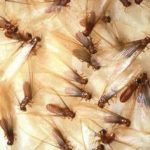 You want to make sure you know what to look for in terms of pests throughout the year. The type of pests you see will change as the weather changes. There are some that will stick around and attempt to access your home all year while others are problematic during a specific season. When pests are able to get in your house they are able to survive longer even as the weather outside changes. This is because they have gained access to your house which is kept at a temperature that is comfortable and they often have access to food as well. There are some very invasive pests that you will start to see in the spring months. The spring is the time that the weather starts to warm up and it is when the flowers bloom and the young are born. It also is the perfect time of year for termites to start to swarm. Termites are a pest that can cause severe amount of damage to your home and property. CSI Home & Commercial Services of Virginia outlines how you can prepare for termites this spring.
You want to make sure you know what to look for in terms of pests throughout the year. The type of pests you see will change as the weather changes. There are some that will stick around and attempt to access your home all year while others are problematic during a specific season. When pests are able to get in your house they are able to survive longer even as the weather outside changes. This is because they have gained access to your house which is kept at a temperature that is comfortable and they often have access to food as well. There are some very invasive pests that you will start to see in the spring months. The spring is the time that the weather starts to warm up and it is when the flowers bloom and the young are born. It also is the perfect time of year for termites to start to swarm. Termites are a pest that can cause severe amount of damage to your home and property. CSI Home & Commercial Services of Virginia outlines how you can prepare for termites this spring.
When is Termite Season?
When it comes to termites they are a pest that can be problematic all year round. Once they find a place to settle in they can start to eat away at all the wood that is in the home’s structure. They are able to sustain themselves by being in the walls and eating through the wood while you keep an indoor temperature that is comfortable. Although termites can be destructive all year long, they are most problematic during the spring months. This is the time that the winged termite swarmers fly around looking for a place to set up a new colony. Once they find a new place and mate, their wings fall off and these discarded wings can often be found on windowsills. During swarming season, if you find discarded wings, you see swarming termites, mud tunnels or frass, or you hear your neighbors have termites; you need to use caution. This is often the only time that you will see the presence of termites and it a sign that you might have a problem. You want to ensure that you take these sightings seriously and call a company that offers termite inspections.
Termite Prevention
There are several things that you can do to prevent termites from taking up shop near your home. You want to reduce the amount of water damaged wood near your home. Start by repairing water leaks and ensure your home has good drainage. The water can expose wood that will act to attract termites. They tend to look for water damaged wood that they can eat. Your home is only one aspect of wood to watch for but you also need to keep an eye on your fences, sheds and other similar wood structures around your home. You also want to paint and seal any wood around your home as well.
Termite Inspection & Treatment
You want to be sure that if you see any signs of termites including swarms you contact a professional like CSI Home & Commercial Services of Virginia right away. We can conduct a thorough inspection to see where termites are getting in the house and present a custom recommendation for how to keep them out. We have treatments to stop termites and control the problem. A professional company is the best way to be sure that your home is protected. Call CSI Home & Commercial Services of Virginia can to inspect for signs of termites and offer treatments to control them for your property today!
Types of Cockroaches in Dale City, VA; How to Get Rid of American, German, Oriental & Wood Roaches
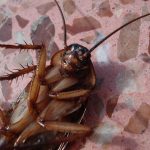 When it comes to pests that you have to deal with there are several that seem to invade all year long. One of the pests you should know more about are cockroaches. They often get in the house easily, whether carried as hitchhikers in boxes and bags, along plumbing pipes, under door or window jambs and other ways that can result in an infestation. The fact is that there are several species of cockroaches you might find in your house. Each species has their own unique characteristics that set them apart. You want to have an idea of what types of cockroaches you might see and what you can do to keep them away. Prevention is key when it comes to cockroach control. CSI Home & Commercial Services outlines what types of cockroaches you might see around your home.
When it comes to pests that you have to deal with there are several that seem to invade all year long. One of the pests you should know more about are cockroaches. They often get in the house easily, whether carried as hitchhikers in boxes and bags, along plumbing pipes, under door or window jambs and other ways that can result in an infestation. The fact is that there are several species of cockroaches you might find in your house. Each species has their own unique characteristics that set them apart. You want to have an idea of what types of cockroaches you might see and what you can do to keep them away. Prevention is key when it comes to cockroach control. CSI Home & Commercial Services outlines what types of cockroaches you might see around your home.
Large, Flying American Cockroaches
One of the cockroaches that you might see in your house is an American cockroach. This is a common cockroach that is found invading many homes. They tend to be quite large and can reach over two inches in length. They also are usually a reddish brown colored cockroach that has a symbol on their back that is normally yellow. They are a cockroach that can start off getting in the house and once they are in they will stay. The adults have wings that they can use but they choose to stay on the ground at all costs. They can fly but not very far if they are frightened or scared.
German Cockroach Infestation
The other type of cockroach that you will see very commonly in your home and around your house are German cockroaches. They are a cockroach that enjoys to be in areas that have some moisture. They are a smaller cockroach species that only reaches just under an inch in length. They are a flat pest and the distinguishing marks are two bands that go down their back. They are lighter in color than the American cockroach. They are also found in dark areas such as cardboard boxes and under cupboards. German cockroaches reproduce quickly and infestations are extremely difficult to get rid of without professional intervention from an exterminator.
Oriental Cockroaches
The next type of cockroach that you might see outside your home are called Oriental Cockroaches. They are different that the other ones in terms of looks. They are usually black and shiny and like to stay in dark and moist places. They do not tend to get very large and will be about an inch in length when they are full grown. They do not have any wings but tend to be wider in the middle than other cockroaches.
Wood Roaches
Another type of cockroach that you might see in your house are called a wood cockroach. They are sometimes confused with other cockroaches but they way that they act are different than others. They are small and light brown in color but their legs are spiny which is different than other cockroaches. They tend to congregate in large groups and are not as scared as other roaches. Even if they see you coming, often they will continue to hang around and stay put.
Cockroach Control
CSI Home & Commercial Services can come out to treat your home for unwanted pests. Call us today!
When is a Mold Inspection, Testing, Assessment, Removal & Remediation Required in Stafford, VA?
 Mold is never good to have growing in your home and seeing any of it requires attention. Many types of mold, particularly black mold, can be extremely toxic. As an incredible risk to your health, the toxicity can be incredibly harmful. With the assistance of CSI Home & Commercial Services, our specialists can inspect for mold, test for which type of mold you may have growing in your home and the remediation and today we would like to elaborate.
Mold is never good to have growing in your home and seeing any of it requires attention. Many types of mold, particularly black mold, can be extremely toxic. As an incredible risk to your health, the toxicity can be incredibly harmful. With the assistance of CSI Home & Commercial Services, our specialists can inspect for mold, test for which type of mold you may have growing in your home and the remediation and today we would like to elaborate.
Mold Removal VS Remediation
Remediation differs from removal when it comes mold. Though some companies offer mold removal, it is not so black and white. Complete mold removal is not feasible because mold exists throughout any natural environment and sanitizing a space to the extent is challenging to say the least. In addition to removing toxic molds such as black mold, mold remediation involves lowering mold within a home or business to acceptable and healthy levels.
Choosing a Mold Remediation Company
Because there are some companies that have good factual information about mold out there to combat all the misinformation and fiction that dominates our industry, selecting the right company is not always forthcoming with the extent of the mold issue. Below are a few tips to take under account when your home is affected by mold.
How Do I Know I Need a Mold Inspection & Testing?
Mold inspections and testing should be a priority when of the below applies to your mold situation.
1) Mold smell. The smell of mold is usually dominant, even if the mold is not visible. Whether there is indeed elevated mold, and where it is located, a mold inspection and mold test can reveal the facts.
2) Water damage. There is a suspicion that elevated mold may exist in the air and/or behind walls, there have been plumbing leaks or water issues.
3) Post mold removal. When mold counts have returned to levels found in normal environments of the same type, Post Mold Removal Clearance Testing can ensure that the previous mold issue has been resolved.
4) Health risks. Though seemingly related to mold symptoms like coughing, sneezing, headaches, and other symptoms of mold exposure and the doctor or the patient that has a health issue where they cannot pinpoint the source. To confirm whether the doctor’s or patient’s suspicions that a mold problem exists a mold inspection is the solution.
5) Real estate. For the protection of buyers and sellers, for real estate transactions; whether there is a mold problem with landlord/tenant disputes; smelling but not seeing mold; or looking to improve the indoor air quality are all a few examples as to when a mold inspection is an ideal solution.
Mold Inspections, Testing, Assessments, Containment, Removal & Remediation
Remediation involves cleaning up existing mold while ensuring to avoid exposure to oneself as well as homeowners. By addressing the moisture source, the prevention new growth. There are levels of remediation that applies to the size of the contaminated area among other factors. Call CSI home & Commercial Services for mold inspection and remediation services if you suspect mold in your Virginia home.
How to Get Rid of Rodents in Fredericksburg, VA; Roof & Norway Rats, House Mice & More
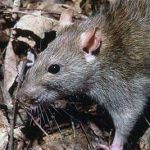 In general, rodents are very adaptable and harmful. They carry a long list of diseases in addition to the potential diseases any fleas or ticks they may be hosting have as well. Rodents are known to terrorize homes with damage to utility lines, structure, insulation, furnishings, and other property. They are also responsible for contaminating and pilfering food. With their destruction, having rodents infest your home can be difficult and challenging to get rid of. Today, we at CSI Home & Commercial Services would like to share the possible rodents that might be invading your Virginia home.
In general, rodents are very adaptable and harmful. They carry a long list of diseases in addition to the potential diseases any fleas or ticks they may be hosting have as well. Rodents are known to terrorize homes with damage to utility lines, structure, insulation, furnishings, and other property. They are also responsible for contaminating and pilfering food. With their destruction, having rodents infest your home can be difficult and challenging to get rid of. Today, we at CSI Home & Commercial Services would like to share the possible rodents that might be invading your Virginia home.
Roof Rats
From the tip of their nose to the end of their tails, roof rats measure in about 15 inches. When compared to other rats, they have a larger ears and eyes, longer tail, and a pointed nose. Their black or brown fur is smooth, and they are smaller and sleeker than Norway rats. Black rats, ship rats, or house rats are also other names for roof rats. As accomplished climbers, these outdoor rodents stick to high places like in trees with dense leaves and branches for protection. Inside they tend to stick to the attic space, and in the wall voids as well as above ceilings. When they infest homes, roof rats are especially known to gnaw through wires and pipes. It is usually because the food or water is scarce or to escape extreme weather conditions when they come into homes. The rat’s diet includes fruit and nuts; however, they are omnivorous and will eat nearly anything.
Norway Rats
From the end of their tail to the tip of their nose, these rats average 16 inches and weigh over 17 ounces (just over a pound). Norway rats are known as the “big rats”. The length of their bodies is shorter than the tail. Their ears and tail are covered in scales and have shaggy brown or gray fur. To help identify their presence, these rodents have capsule-shaped droppings. They do prefer to live outdoors and nest in underground burrow and when compared to other urban rodents, these rats are bulky though they take advantage of indoor living. The ground level of homes and businesses in addition to sewers and basements are popular nesting areas. To offer more concealment, they will also nest in vegetation, as well as the dense vegetation found around the home, the increase risk if them coming inside is high. These rats include seeds, cockroaches, grains, meats, fruit, and other food wastes in their diet as omnivorous critters, they will eat anything from eating garbage to eating what other edibles. Norway rats do live in communities with dominant and subordinate members though they are not social pests.
Common House Mouse
The short hair varies from light brown, gray, and black and the house mice white or light-colored bellies. A bit sparser, the ears and tail have hair. The tip of the nose to the tail averages about 7 inches long and weight about an ounce. Pointed on both ends, their droppings are rod-shaped. Throughout Virginia, house mice are notorious for invading homes and business. Their nesting habits cause minor damage and only require ¼” crack or hole to gain entry to structures. These mice have shelter from the elements and predators and the rodents prefer living indoors where food and water are readily available. To nest in clutter, unsanitary places, and other such areas house mice will often hide in the wall voids.
White-Footed Mouse
Found in the rural and sub-rural areas of Virginia, the white-footed mouse prefers habitats that include forests and brush lands, specifically, the forests edge where vegetation is low and scrubby. These mice will also construct nests in the walls at ground level of buildings. In addition to the grass, weeds, or other low growing vegetation, these mice can nest. Insects, nuts, seeds, and berries are included in their diet.
Rodent Control
For rodent control in Virginia, call CSI Home & Commercial Services and let our qualified experts do the rest.
How to Get Rid of Carpenter, Fire, Pavement, Pharaoh & Other Types of Ants in Manassas, VA
Ants, large and small, can show up suddenly and in large numbers. It’s always a bit alarming to see a trail of ants in your home. Where are they coming from? How did they get in and what kind of ants are they?
Carpenter Ants
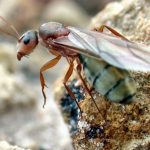 Carpenter ants are reddish black in color and 5/8 inch in size. Carpenter ants will build their nests outside in different wood sources and will come into buildings through wood that is damaged, cracks around windows and doors, or holes that are meant for wires and/or pipes. They will also use tree limbs or shrubs that touch your home to get inside. These ants can cause damage to your home as they create tunnels through wood to build nests. The amount of damage will depend on the number of ants you’re dealing with and how long they have been there.
Carpenter ants are reddish black in color and 5/8 inch in size. Carpenter ants will build their nests outside in different wood sources and will come into buildings through wood that is damaged, cracks around windows and doors, or holes that are meant for wires and/or pipes. They will also use tree limbs or shrubs that touch your home to get inside. These ants can cause damage to your home as they create tunnels through wood to build nests. The amount of damage will depend on the number of ants you’re dealing with and how long they have been there.
Red Imported Fire Ants
Red imported ants are dark reddish brown in color and can be 1/8-3/8 inches in size. These ants will build nest mounds in outdoor landscape areas or near the foundation of your home. They will also get inside through holes and/or cracks in the exterior of your home. When the nest of red imported fire ants becomes disturbed, they can and will attack with a painful sting. These stings often result in raised welts that will become white pustules. If a person in allergic to the sting, they will react more severely.
Pavement Ants
Pavement ants are dark brown to blackish in color and 1/8 inch in size. Pavement ants are most likely found in ground-level masonry walls. They will also nest in these walls and in the insulation under floors. Outside of your home they will nest under stones, cracks in pavement and next to buildings. While pavement ants are not dangerous to your health, they can contaminate food.
Pharaoh Ants
Pharaoh ants are light yellow to red in color, with black markings on the abdomen and are 1/16 inches in size. These ants are often found in commercial food handling establishments like hotels, grocery store and hospitals or your home. They will nest in warm, humid areas near food and water sources. Their nests are often located in areas that are hard to get at. Outside, they will nest in shaded areas or under debris. These ants have been implicated in the spread of more than a dozen disease pathogens.
Ant Control
If you’ve never had a run in with ants in your home, consider yourself lucky. But since ants are the number one nuisance pest in the United States, you should take steps to keep them away, so you won’t have to try and get rid of them. Ants will always look for a supply of food and water, so eliminate food and water sources. Seal all entry points into your home and call the professionals if you need help. Professionals will identify the type of ant, eliminate the problem and provide a plan to keep them from coming back. Call CSI Home & Commercial Services. We know ants!
How to Get Rid of Lone Star Ticks in Your Fairfax, VA Yard; Identification, Treatment for Bite & More
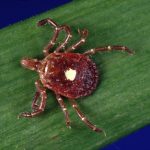 Because of the single silvery-white spot marked on the females’ back, the lone star tick was so named. These ticks attack people more frequently than most any other type of tick. They usually leave behind a circular rash and lone star ticks are notorious for spreading harmful diseases. It is crucial that if you discover a lone star tick on you or your pet is immediately removed. In regard to lone star ticks, the we at CSI Home and Commercial Services would like to share some basic information with you today.
Because of the single silvery-white spot marked on the females’ back, the lone star tick was so named. These ticks attack people more frequently than most any other type of tick. They usually leave behind a circular rash and lone star ticks are notorious for spreading harmful diseases. It is crucial that if you discover a lone star tick on you or your pet is immediately removed. In regard to lone star ticks, the we at CSI Home and Commercial Services would like to share some basic information with you today.
Lone Star Tick Identification
Lone star ticks are reddish brown and will look a slate gray when engorged, and as mentioned, the ladies feature a whitish marking on their back. By adulthood, they have 8 legs, qualifying them as arachnids, though as larvae they only have 6 legs. With oval-shaped and flattened bodies, females average between ¼ inch long and ½ inch when engorged and the males are smaller.
Treatment for Lone Star Tick Bite
These ticks can be brought inside your home by you or your pet, though they usually do not survive long indoors. Should you find them latched onto you or your pet, use fine-tipped tweezers to grasp it as close to the skin’s surface as possible. Do not twist or jerk the lone star tick, as this can cause the mouthparts to break off and remain in the skin but pull upward steadily with even pressure. Make sure to dispose the ticks. Wash the bite wound with warm water and soap; contact a doctor if you have a rash, fever, headache, or pains developing. Avoid lone star ticks with long-sleeved clothes and pants along with wearing tick repellent. Stay clear of lounging to long on or against stumps, logs, or bushy areas and after spending time in such areas.
Lone Star Tick Life Cycle; Nymphal Stage & More
Lone star ticks are a a three host tick, meaning that they need a new host with each stage. They initially contact the host by crawling up on the tips of the low-growing vegetation as they lay in wait for a host to pass by. Lone star ticks cannot survive long exposure to the sun and will seek refuge in shaded areas. The habitat must also contain both small animal hosts for larvae, though adults target bigger animals. A favorite habitat for lone star ticks is woods to lawn or meadow transitional zone and for eggs to hatch, and they require 65% or greater humidity levels until they latch on a host. Common small animals the larvae attach to include gray squirrel, cat, ground nesting birds, gray fox, striped skunk, raccoon, cottontail rabbit, and cotton rat. Nymphs will also select one of these smaller animals as well as larger animals the adults prefer including foxes, dogs, wild turkey, cats, cattle, white-tailed deer and people; and humans can support these ticks in all 3 stages.
Lone Star Tick Diseases
Lone star ticks are known vectors for Heartland virus, tularemia, Bourbon virus and Southern tick-associated rash illness (STARI), putting their host at risk for being infected. You can develop a secondary infection when attempting to remove ticks because of the problematic mouthparts.
Tick Control
Especially along the trails, paths, and yard edges, be sure to keep the grass cut short and the vegetation trimmed back to reduce ideal habitats. Preventative pest control maintenance can help as well, but if you find one on you or your pet, be sure to take care of the removal and medical treatment as needed and call CSI Home and Commercial Services to ensure any ticks and viable eggs are eliminated.
What Attracts Mosquitoes? How to Prevent Mosquito Bites & Keep Them Away in Lorton, VA
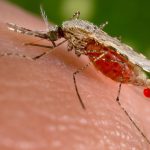 Mosquito season is fast approaching and residents all around Virginia are gearing up for another itchy fight with these flying pests. They bother us at our Summer BBQs, on our evening walks and any other time we simply don’t want them around. If you haven’t already begun prepping for mosquito season, there is no better time than now to get a head start before they take up residence in your yard. Deterring mosquitoes from your yard is easier than dealing with an infestation of them. We’re sure you’re tired of dealing with these disease carrying insects, but unfortunately, their presence is inevitable in our state of Virginia. Good news is there are steps you can take to limit their presence around your home, and it all starts with getting ready early.
Mosquito season is fast approaching and residents all around Virginia are gearing up for another itchy fight with these flying pests. They bother us at our Summer BBQs, on our evening walks and any other time we simply don’t want them around. If you haven’t already begun prepping for mosquito season, there is no better time than now to get a head start before they take up residence in your yard. Deterring mosquitoes from your yard is easier than dealing with an infestation of them. We’re sure you’re tired of dealing with these disease carrying insects, but unfortunately, their presence is inevitable in our state of Virginia. Good news is there are steps you can take to limit their presence around your home, and it all starts with getting ready early.
Mosquitoes are the Deadliest Insects
Did you know that the deadliest creature in the world is in fact the mosquito? Mosquito borne-illnesses claim the lives of more than 2.7 million people every year. That’s more than sharks, lions, wolves, hippos and bears combined! There are more than 3,500 species of mosquito found worldwide.
Mosquito Species & Diseases Such as Zika & West Nile Virus Present in Virginia
The state of Virginia is home to more than 65 different species of mosquitoes. The black-and-white striped Asian tiger mosquito is one of the most common and widespread mosquitoes of concern found in Virginia. Common mosquito borne-illnesses seen here are West Nile virus, Yellow fever, St. Louis encephalitis, Easter equine encephalitis and dog heartworms. However, Zika Virus has been a concern here also in recent years.
Mosquito Lifespan & Life Cycle
A single female mosquito can lay up to 300 eggs at a time. Female mosquitoes lay their eggs in stagnant water, which is necessary for their survival. The first 10 days of a mosquito’s life are spent in the water, where they feed on the present organic matter and breathe oxygen from the surface. After the course of several days they will emerge from the water as adult flying mosquitoes. The average lifespan of a mosquito is less than two months, that is of course, unless you kill them first. These archaic blood suckers are one of the oldest known species of insects in existence, dating back to the Jurassic period.
What Attracts Mosquitoes to Homes & Yards
Ever wonder why mosquitoes are so attracted to us? It seems like they can see us coming from a mile away! Our skin produces more than 300 chemical odors, most of them smell like a good meal to a mosquito. Every time we sweat, we release a chemical known as octenol which attracts a mosquito from hundreds of feet away. The cholesterol, folic acid, lotions, perfumes and bacteria we carry are also very attractive to mosquitoes. Our woes don’t end there, even the CO2 we emit from our breath, dark clothes and our body heat are all too tempting for these buzzing buggers. Mosquitoes require a blood meal in order to mate successfully, making us and our pets prime targets. We aren’t the only things they are interested in, they want our yards and homes too. Any stagnant water wading around is prime territory for a mosquito to lay their eggs.
How to Prevent Mosquito Bites
Making your home a force field against mosquitoes starts with ensuring there is no standing water anywhere near your home. This includes gutters, under and around porches, old tires, trash or any other place where water can be hiding. Mosquitoes only need enough water to fill a milk jug cap to lay their eggs. The Center for Disease Control also highly recommends DEET (10%) to be used before heading outside to protect yourself from mosquitoes as well as wear long sleeve, loose fitting and light-colored clothing to decrease your chances of getting bit.
Mosquito Control
Next, it is highly recommended for you to work closely with an experienced and licensed pest control company like CSI of Virginia to treat your yard, bushes, shrubs, gutters and other areas for mosquitoes and their larvae. CSI of Virginia is a locally licensed pest control agency with years of experience in mosquito control. Call us today to schedule your home’s pest inspection and treatment before the mosquitoes start biting!
Signs of Termites in Woodbridge, VA? Termite Inspection for Home Purchase or Maintenance
 Termites are a real problem in Virginia, and being that Alaska is the only exception for termites that live in any other state in the U.S., most are familiar with the notorious damage these insects cause. Due to termites, there is an estimated $50 billion in damage to buildings and structures a year. These pests are extremely troublesome as extensive damage can be done to your home or business before you ever realize termites have infested it. Termites consume wood from the inside out, and if you do not know what to look for, they can be a challenge to detect. Whether you are looking to buy a new home, suspect termites have invaded, or heard of an infestation close by, a termite inspection by a trusted professional is more than optimal. Bearing this mind, we at CSI Home and Commercial Services would like to cover the general basics of a termite inspection.
Termites are a real problem in Virginia, and being that Alaska is the only exception for termites that live in any other state in the U.S., most are familiar with the notorious damage these insects cause. Due to termites, there is an estimated $50 billion in damage to buildings and structures a year. These pests are extremely troublesome as extensive damage can be done to your home or business before you ever realize termites have infested it. Termites consume wood from the inside out, and if you do not know what to look for, they can be a challenge to detect. Whether you are looking to buy a new home, suspect termites have invaded, or heard of an infestation close by, a termite inspection by a trusted professional is more than optimal. Bearing this mind, we at CSI Home and Commercial Services would like to cover the general basics of a termite inspection.
Termite Swarmers
Once a colony is well established, reproducing termites will branch out to start new colonies. An established colony, after a few years, will produce winged reproducing king and queen termites. These sexually matured adults will fly off to start new colonies during the spring. Once they select a new area, the wings are shed, and they begin multiplying. Seeing them flying about or finding the discarded wings are a sure sign of termites. The swarmers and/or their wings are commonly found along window sills. However, there are several ant species that match this behavior, but a trained professional can better recognize the intruders.
Wood Termite Damage
Professionals can see any distinguishable evidence on the surface of wood when termites are currently infesting the wood, though many untrained people do not notice. Professionals look for the crusts of dirt from where they packed the galleries with mud, check for hollow wood, or the deep parallel grooves from excavation work, that suggests termite damaged wood.
Termite Mud Tubes
Should you find these mud tubes first, immediately call a professional, as they look for them during the inspection. Typically, the general areas inspected are the crawlspace, along your foundation, in the attic, and any other entry points to your home. The mud tubes are constructed with soil, wood cellulose and other debris. Termites require these protective tubes to get to the wood, avoid potential threats and maintain the humidity levels. To increase their comfort, termites frequently seal small gaps with dirt. Professionals will inspect concrete, sheetrock, mud crammed into construction joints, and even wood to look for any crusted dirt in the small holes or cracks.
Termites in Landscaping
Termites are not just a problem once they get inside your home or business, but they can destroy your landscaping, and easily get to your home. Wood mulch, firewood, wood fencing, fallen dead trees or stumps, as well as wooden structures, like decks, arbors, sheds, and playsets can all be infested with termites. A professional will look for evidence of termites there, but if you stumble across it first, call in the pros.
Termite Inspection & Treatment
Professionals of CSI Home and Commercial Services are very thorough during a termite inspection can be of assistance if you suspect termites or simply want preventative measures. Call us today to schedule your termite inspection.




